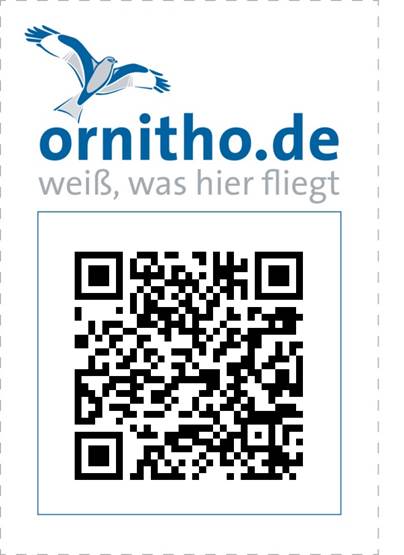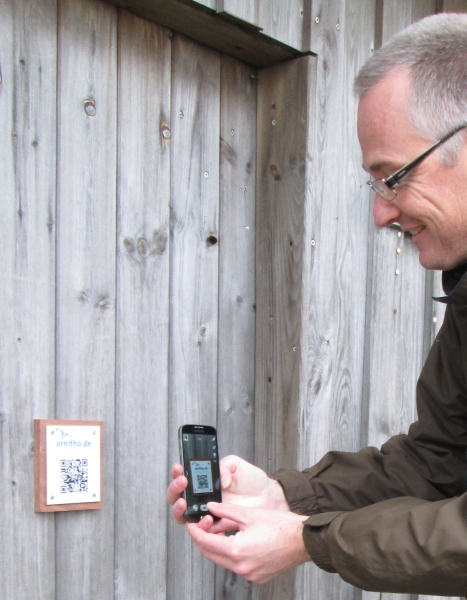|
In many places, observation towers and hides invite you to observe nature without disturbance. However, current observations are - if at all - often only offered in the form of printed observation lists in showcases, the updating of which usually involves more effort.
Users of ornitho.de can use the NaturaList app to always retrieve the latest observations from their surroundings. But what about nature enthusiasts who do not regularly observe birds or who do not (yet) participate in ornitho.de for other reasons?
The QR codes of ornitho.de can be used to provide all visitors with current observations. Nowadays, almost everyone has a mobile phone or tablet with them. Most of these devices have a built-in camera and software that makes it child's play to scan the contents of the QR codes. One more click is all it takes: And ornitho.de lists the most recent observations entered at that location, even those entered only a few moments ago.
Where to place?
The ornitho QR codes can be integrated into new information boards or added to existing boards. They can also be installed on their own on poles or directly on observation facilities. Incidentally, QR codes are not very susceptible to vandalism: since the data in the QR code is protected by an error-correcting code, a loss of up to 30% of the code is tolerated, i.e. it can still be read even if it is either scanned from an unfavourable angle or has been damaged.
Making up-to-date information about the bird life of the surrounding area available via QR codes without any further effort is certainly an attractive way for nature conservation associations and ornithological working groups as well as for tourism to bring interested people closer to nature.
You can find more information in our QR code concept [PDF]. If you are interested, please contact us at ornitho@dda-web.de.
|
  
The QR codes from ornitho can be scanned with any smartphone with a built-in camera and then always provide visitors with up-to-date observations from the respective area.
You can scan the code shown here directly from the screen as a test!
Translated with DeepL
|
|